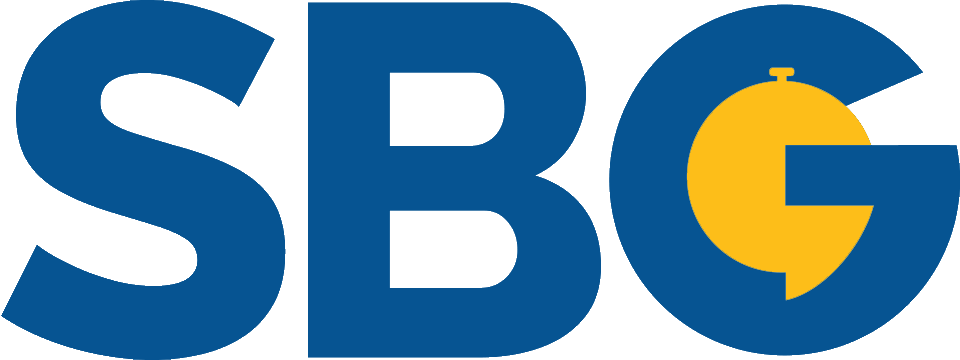Imagine your call center as a finely tuned orchestra, where every instrument (or, in this case, metric) plays a vital role in creating harmony. If one metric is off, the entire performance can fall flat. That’s why understanding and tracking the right call center metrics and KPIs are crucial for keeping your operation in sync.
In this post, we’ll explore 10 essential call center metrics that will help ensure your team hits all the right notes and delivers top-notch performance every time the phone rings.
So, are you ready to improve your call center’s effectiveness and step up your business game? Let’s get right into it!
Understanding the Key Metrics
Before we jump into the specifics, it’s crucial to understand why these call center metrics matter. Think of them as your mile markers, guiding your team toward success. By tracking these metrics, you get a clear view of what’s working and what’s not and where adjustments are needed, helping you make informed decisions that boost both efficiency and customer satisfaction.
These metrics are far more than just numbers – they’re the pulse of your call center, reflecting how well you’re meeting customer needs and where there’s room for improvement. Focusing on the right metrics can transform your operational efficiency and customer experience, leading to more satisfied customers and a stronger bottom line.
But what if you don’t have the internal resources to track and optimize these metrics effectively? That’s where outsourcing can make a world of difference. Partnering with our experts here at Silver Bell Group gives you access to specialized teams who excel in managing these critical metrics. Whether it’s handling outbound calls or optimizing agent performance, outsourcing can help keep your operation running smoothly, allowing your team to focus on delivering exceptional service.
Each of the following metrics plays a vital role in your contact center’s success. Now, let’s dive into the 10 essential call center metrics that will keep your operation on track.
1. Average Handle Time (AHT)
Average Handle Time (AHT) is like the heartbeat of your call center. It shows how long, on average, your agents spend on each call, including talk time, hold time, and any follow-up work. While it’s great to keep calls efficient, you don’t want to rush your customers off the phone. Finding the right balance is key – quick enough to keep things moving but thorough enough to resolve issues effectively.
What to Track: Break down AHT into three components:
- Talk Time: This is the time your agents spend directly interacting with customers. Keeping this time productive and on-topic is crucial, but agents should also ensure they’re giving customers the time they need to explain their issues without feeling rushed.
- Hold Time: This measures the time customers spend on hold while agents look up information or consult with colleagues. While some hold time is unavoidable, excessive hold time can lead to frustration. Monitoring this helps you identify whether agents need more training or access to better resources.
- After-Call Work: This includes the time agents spend completing tasks after the call ends, such as updating records or sending follow-up emails. Streamlining after-call processes can help reduce AHT without sacrificing service quality.
Extra Tip: Regularly reviewing AHT can reveal areas where your team might benefit from additional support or training. Consider whether outsourcing certain tasks could help reduce AHT by allowing your agents to focus more on customer interaction.
2. First-Call Resolution (FCR)
First-Call Resolution (FCR) is a crucial metric that measures your call center’s ability to resolve customer issues on the first contact without the need for follow-up calls. A high FCR rate indicates that your agents are well-equipped to handle customer queries efficiently, leading to greater customer satisfaction and loyalty. After all, customers appreciate when their problems are solved quickly and without hassle.
What to Track: Focus on measuring the percentage of calls that are resolved during the first interaction, with no need for further contact.
- Resolution Rate: This is the percentage of issues that are fully resolved in a single call. Tracking this helps you identify whether your agents have the necessary tools and knowledge to solve problems effectively on the first try.
- Customer Feedback: Use post-call surveys to gather feedback on whether customers felt their issue was fully resolved. This direct input can provide valuable insights into where your process might be falling short.
- Agent Training: High FCR is often linked to effective agent training. Ensure that your team is well-trained and has access to the information they need to address customer inquiries accurately and efficiently.
Extra Tip: If your FCR rates are low, enhancing agent training programs or updating knowledge bases could significantly improve your team’s performance. In some cases, outsourcing complex or specialized tasks can also help improve FCR by ensuring that the right experts handle calls.

3. Customer Satisfaction Scores (CSAT)
Customer Satisfaction Scores (CSAT) offer a direct measure of how happy customers are with their experience. These scores are typically gathered through surveys sent out immediately after a call, capturing the customer’s feelings while the experience is still fresh in their mind. High CSAT scores indicate that your call center is meeting customer expectations, while lower scores highlight areas that need improvement.
What to Track: Focus on collecting and analyzing customer feedback to gauge overall satisfaction levels.
- Survey Response Rate: The number of customers who respond to your CSAT surveys. A high response rate means you’re getting a good sample of customer opinions, which can help you identify trends and areas for improvement.
- Score Analysis: Look at the average CSAT score over time to see if there are any patterns. Are certain times of day, agents, or call types consistently getting higher or lower scores? Understanding these trends can help you make targeted improvements.
- Follow-Up: Use the feedback from CSAT surveys to identify and address specific issues. If customers consistently mention the same problems, it’s a sign that something in your process needs to change.
Extra Tip: Satisfied customers are more likely to become loyal, repeat customers. To improve CSAT scores, ensure that your agents are empathetic, well-trained, and equipped to handle a wide range of customer inquiries. If you find that handling customer feedback is too time-consuming, consider outsourcing this task to our experts at Silver Bell Group. We are here to help!
4. Average Speed of Answer (ASA)
Average Speed of Answer (ASA) measures how quickly your agents answer incoming calls. Long wait times can frustrate customers and lead to higher abandonment rates, where customers hang up before their call is even answered. Keeping your ASA low is essential for providing a positive customer experience with your call center from the moment they dial in.
What to Track: Monitor how long it takes for an incoming call to be answered by a live agent.
- Queue Management: Keep an eye on the number of calls in the queue and how long customers are waiting. If your queue times are consistently long, it might be time to adjust your staffing levels or call routing procedures.
- Peak Times: Analyze ASA during different times of the day or week. Identifying peak times when ASA is longer can help you optimize your staffing schedule to better match call volume.
- Customer Patience: Understand that different customer segments may have different levels of patience. For example, new customers might be more willing to wait than returning ones. Tailoring your approach based on customer expectations can help improve the overall experience.
Extra Tip: If your ASA is too high, consider implementing callback options or improving your IVR system to route calls more efficiently. These strategies can help manage high call volumes and reduce wait times.
5. Abandonment Rate
The Abandonment Rate tracks the percentage of customers who hang up before reaching an agent. A high abandonment rate is a red flag that customers are getting frustrated, either because they’re waiting too long or because your IVR system isn’t user-friendly. This metric is crucial for understanding customer patience and the effectiveness of your call routing.
What to Track: Focus on the percentage of incoming calls that are abandoned before the caller speaks to an agent.
- Call Abandonment Trends: Analyze when and why customers are abandoning calls. Is it happening at a specific time of day or after a certain wait time? Understanding these trends can help you make necessary adjustments to reduce abandonment.
- IVR Optimization: Consider whether your IVR system is too complicated or frustrating for customers. Simplifying menus and making it easier for customers to reach an agent can lower the abandonment rate.
- Wait Time Management: Look at the correlation between wait times and abandonment rates. If longer wait times are leading to higher abandonment, consider increasing staffing levels during peak hours or offering a callback option.
Extra Tip: Lowering your abandonment rate can significantly improve customer satisfaction. Implementing better queue management and offering customers alternatives like callbacks can help keep them engaged even during peak times.
6. Percentage of Calls Blocked
The Percentage of Calls Blocked measures how often customers can’t get through to your call center because all lines are busy. This is a critical metric because it directly impacts customer access and satisfaction. If customers are greeted with a busy tone or can’t connect, they’re likely to become frustrated and may even take their business elsewhere.
What to Track: Focus on the percentage of incoming calls that are blocked due to a lack of available lines.
- Capacity Management: Ensure that your call center has enough capacity to handle peak call volumes. Regularly reviewing your telecom infrastructure can help prevent blocked calls and ensure that customers can always reach you.
- Peak Demand: Identify peak demand periods and consider increasing your line capacity or staffing levels during these times to reduce the percentage of calls blocked.
- Customer Impact: Understand the impact of blocked calls on customer satisfaction. If customers can’t reach you, it affects not only their current experience but also their overall perception of your brand.
Extra Tip: If your percentage of calls blocked is high, it’s a sign that your infrastructure may need an upgrade or that you need to adjust your staffing levels. Here at Silver Bell Group, our professional teams can help manage your call volumes by providing additional resources, ensuring your customers can always get through when they need you. Feel free to give us a call!
7. Customer Effort Score (CES)
The Customer Effort Score (CES) measures how easy it is for customers to get their issues resolved. Customers who have to put in a lot of effort are more likely to be dissatisfied, even if their issue is eventually resolved. A lower CES indicates that your processes are streamlined and customer-friendly, leading to higher overall satisfaction.
What to Track: Focus on measuring the ease with which customers can resolve their issues, usually through post-interaction surveys.
- Survey Simplicity: Use simple, clear surveys to gather data on how much effort customers felt they had to exert to get their issue resolved. The easier the survey, the more likely you are to get honest, helpful responses.
- Process Evaluation: Analyze the steps customers have to take to resolve their issues. Are there unnecessary hurdles or complicated procedures that could be simplified? Reducing these can significantly improve your CES.
- Agent Empowerment: Ensure that your agents have the authority and resources to resolve issues on the spot rather than escalating them. This can greatly reduce the effort required from customers and improve their overall experience.
Extra Tip: Simplifying customer interactions and empowering agents to resolve issues quickly can lead to lower CES and higher customer satisfaction. Reviewing and refining your customer service processes regularly can make a big difference.
8. Agent Performance
Agent Performance is the backbone of your call center’s success. It measures how effectively your agents are handling calls and resolving issues. High-performing agents not only resolve issues quickly but also leave customers feeling valued and satisfied. Monitoring this metric helps you ensure that your team is working efficiently and delivering high-quality service.
What to Track: Focus on key performance indicators (KPIs) that reflect how well your agents are performing.
- Call Handling Time: Monitor how long each agent spends on calls. While it’s important to be efficient, agents should also be thorough in resolving issues. Balancing speed with quality is key to strong agent performance.
- Customer Feedback: Use customer feedback to gauge agent performance. Positive feedback can indicate that an agent is doing well, while negative feedback can highlight areas for improvement.
- Resolution Rates: Track how often agents are able to resolve issues on the first call. Higher resolution rates typically indicate better agent performance and higher customer satisfaction.
Extra Tip: Regular training and support are essential for maintaining high agent performance. Providing your agents with ongoing development opportunities, like workshops and refreshers, can help them stay sharp and improve their service quality.
9. Call Transfer Rate
The Call Transfer Rate measures how often calls are transferred from one agent to another or a different department. High transfer rates can indicate that your agents aren’t fully equipped to handle the issues they’re receiving or that your call routing system needs improvement. Reducing unnecessary transfers can lead to faster resolutions and happier customers.
What to Track: Focus on the percentage of calls that are transferred to another agent or department.
- Reason for Transfer: Understand why calls are being transferred. Is it because agents lack the necessary knowledge, or is the issue beyond their scope? Identifying the root cause can help you address the underlying problem.
- Training Needs: If transfers are happening due to a lack of agent knowledge, it’s a sign that additional training is needed. Equipping agents with the right skills can reduce the need for transfers.
- Routing Efficiency: Review your call routing system to ensure that calls are directed to the right agent or department from the start. Improving routing efficiency can lower the transfer rate and enhance the overall customer experience.
Extra Tip: Consider enhancing your call routing system to ensure that customers are directed to the most appropriate agent from the outset. This can reduce the need for transfers and lead to quicker resolutions.
10. Customer Retention Rate
The Customer Retention Rate measures how well you’re able to keep your customers coming back. Retaining customers is often more cost-effective than acquiring new ones, and a high retention rate is a strong indicator that your customers are satisfied and loyal. This metric is crucial for long-term success and profitability.
What to Track: Focus on the percentage of customers who continue to use your services over a given period.
- Retention Trends: Analyze how your retention rate changes over time. Are there specific periods where retention drops? Understanding these trends can help you address issues before they become bigger problems.
- Customer Feedback: Use customer feedback to understand why some customers stay while others leave. This insight can help you improve your services and increase retention.
- Loyalty Programs: Implement loyalty programs or special offers to encourage customers to stick around. Rewarding loyal customers can boost your retention rate and strengthen customer relationships.
Extra Tip: Focusing on customer retention can have a big impact on your bottom line. If you need help managing customer relationships and improving retention, Silver Bell Group offers outsourcing services that can support your efforts and keep your customers coming back.
Wrapping It Up
Mastering these 10 call center metrics is key to driving your call center’s performance and delivering exceptional customer service. By keeping a close eye on these metrics, you can make informed decisions, optimize your operations, and ensure your team is providing the best possible experience for your customers.
And remember, if you ever need additional support, we at Silver Bell Group are here to help. Whether it’s outsourcing your sales team, improving agent performance, or optimizing your call center metrics, partnering with experts can give your call center the boost it needs to excel.



